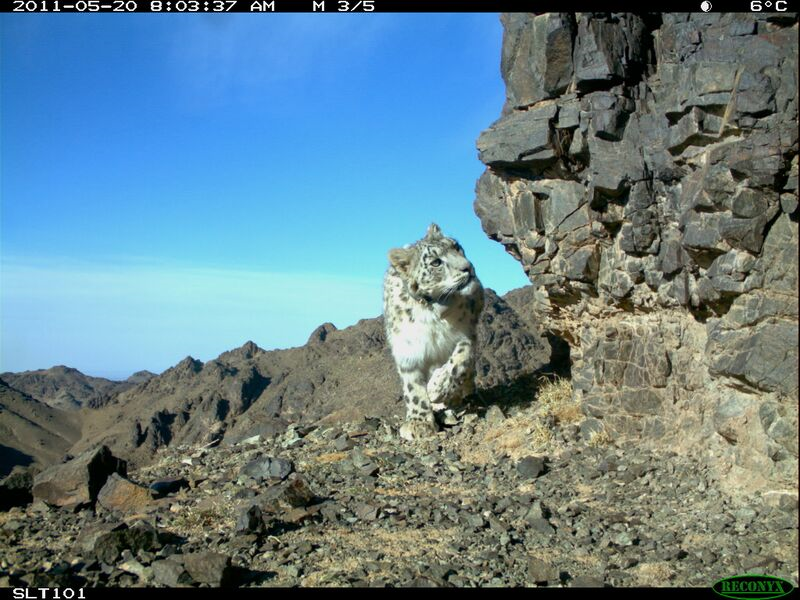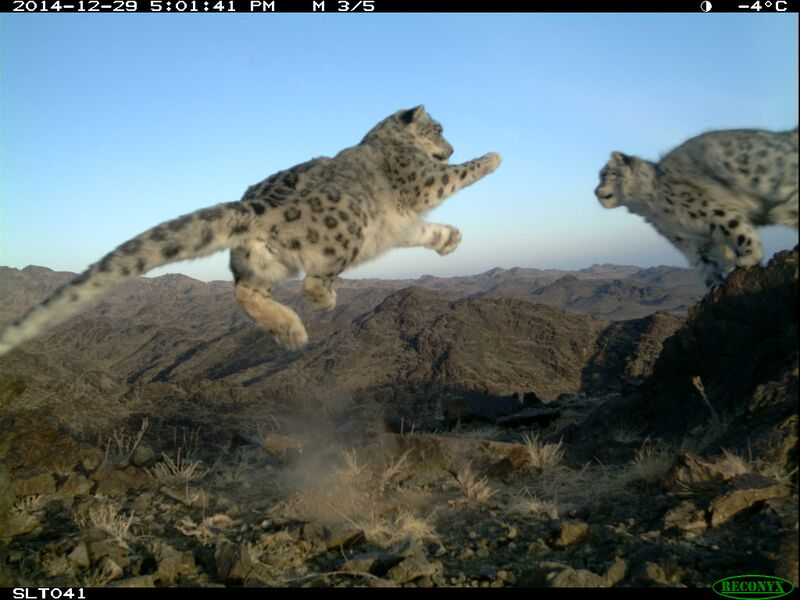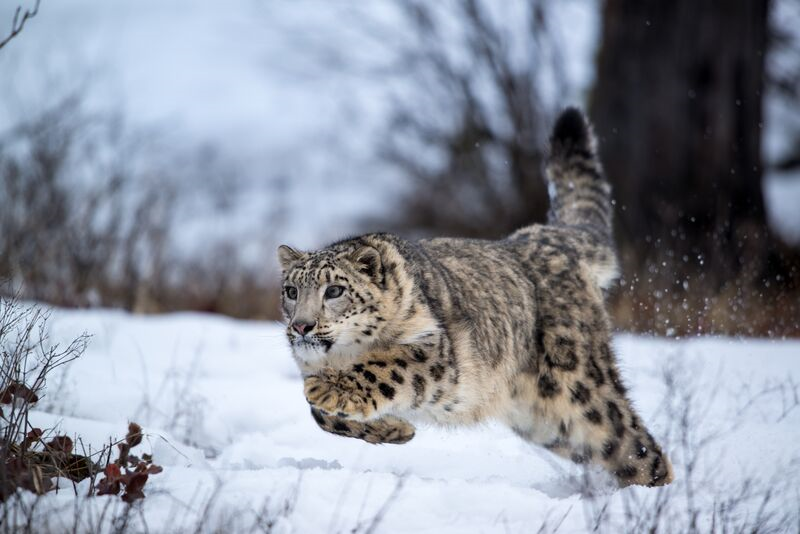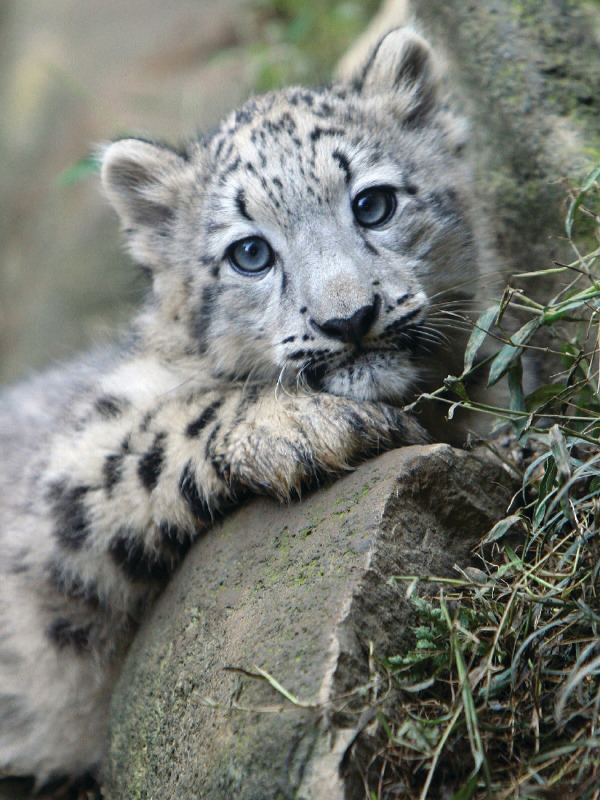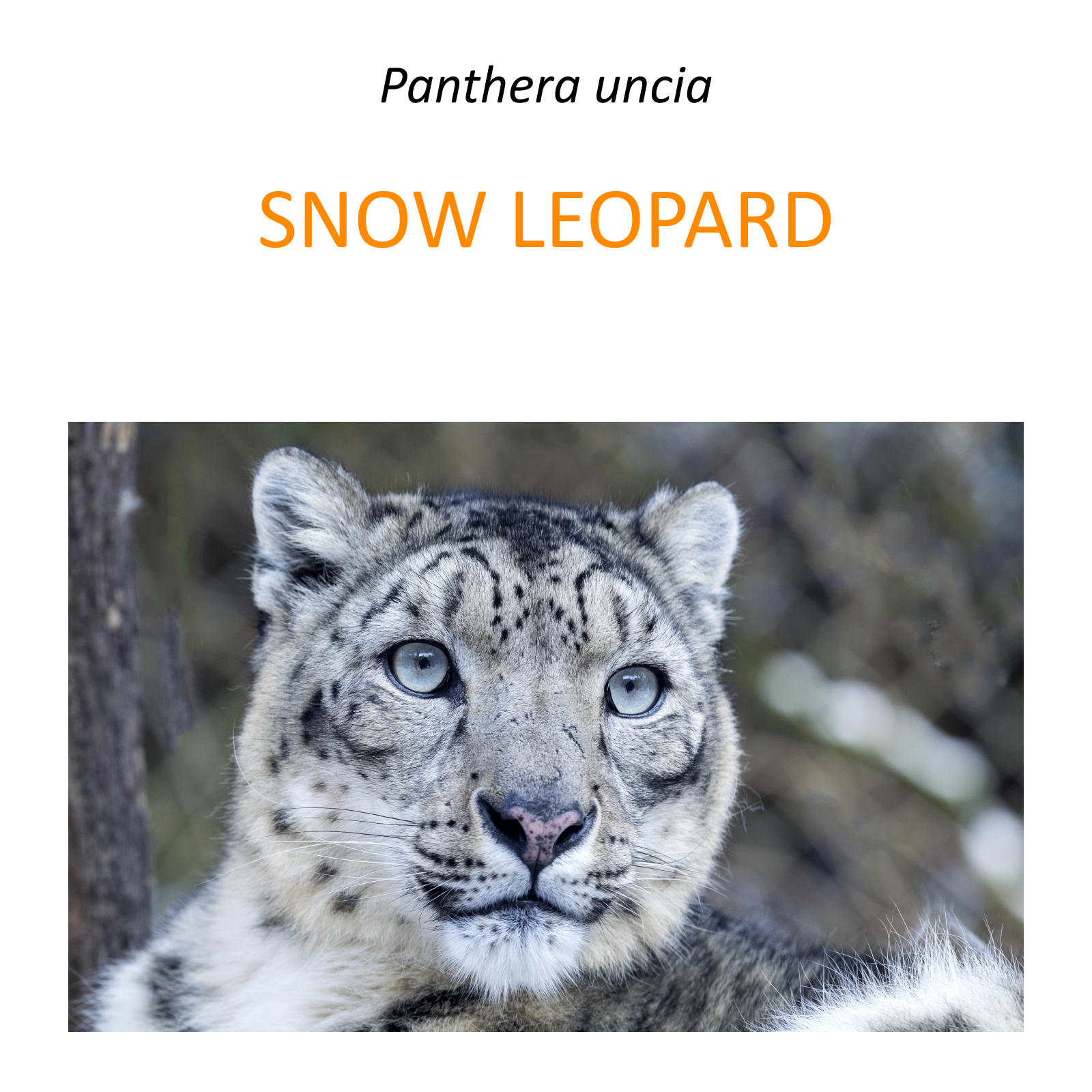Description
A mysterious predator, the snow leopard (Panthera uncia) roams the Himalayas, the Tibetan Plateau, and the mountains of Central Asia. Its magnificent fur, which protects it from the region’s harsh climate, has become its greatest curse. Poaching and the expansion of livestock farming in high-altitude areas are the biggest threats to the survival of this species.
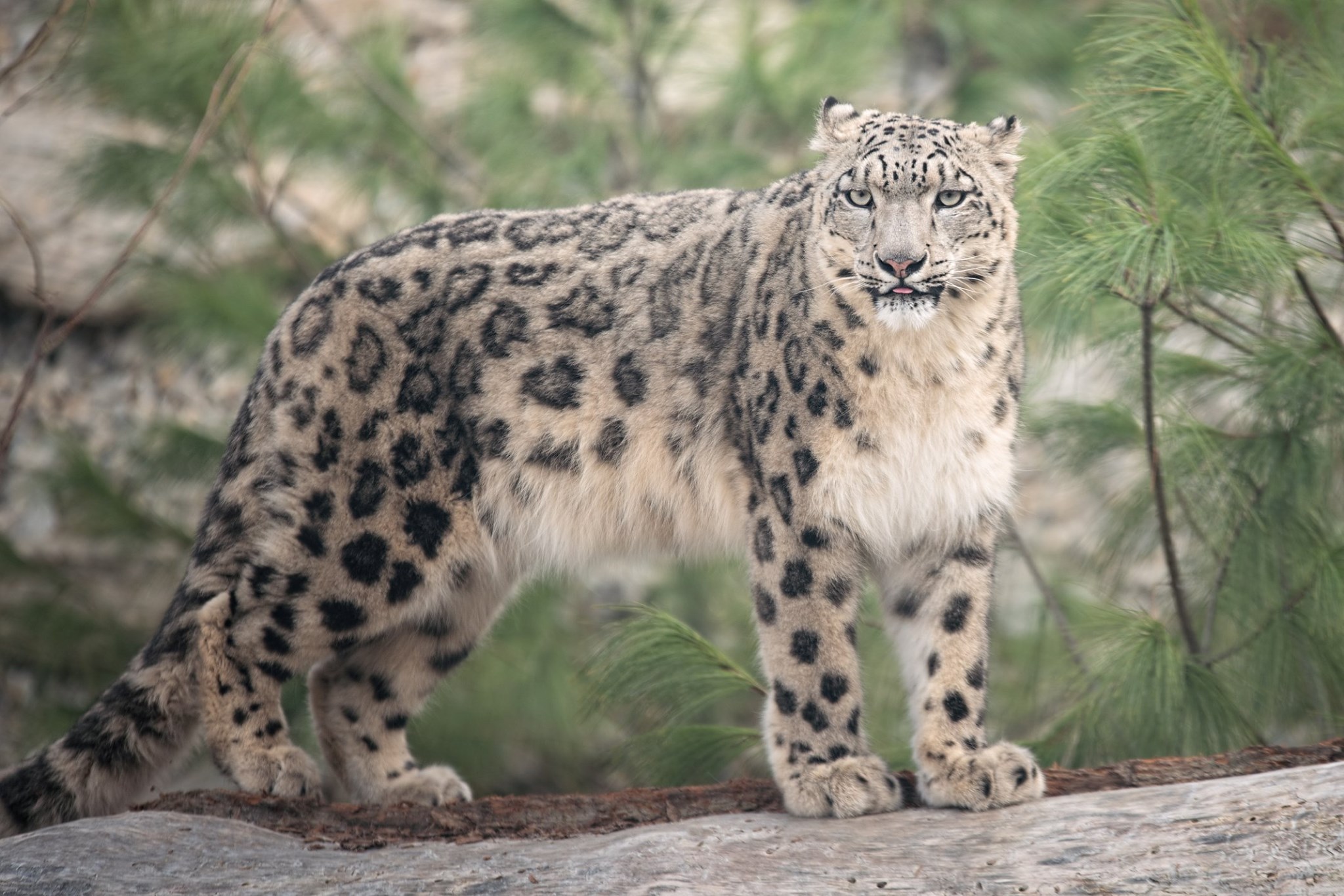
The snow leopard is exceptionally well-adapted to extreme mountain conditions. Its dense fur provides excellent insulation against freezing temperatures, while also acting as camouflage. Its white-cream or grayish coat, covered in black and dark brown rosettes, makes it incredibly difficult to spot against rocky cliffs and snow-covered slopes.
Snow leopards are relatively small members of the genus Panthera. Their body length ranges from 86 to 125 cm (2.8–4.1 ft), and their thick, bushy tail can reach up to 105 cm (3.4 ft). They weigh up to 52 kg (115 lbs), with females being smaller and lighter than males. Their stocky build and short limbs make them well-suited for navigating rocky terrain.
Until recently, snow leopards were nearly impossible to observe in the wild. It was only with the introduction of camera traps that researchers and photographers were able to capture images of these rare and elusive cats in their natural habitat.
Snow leopards are active during the day and at dusk. They lead solitary lives, coming together only during the breeding season. The female raises her offspring alone, typically giving birth to two or three cubs—though larger litters have been observed in zoos.
